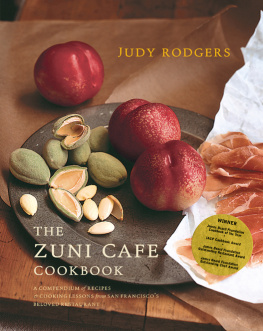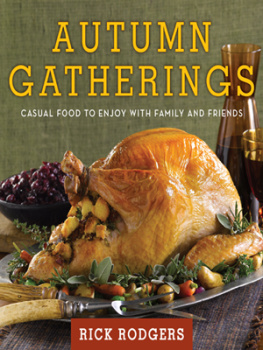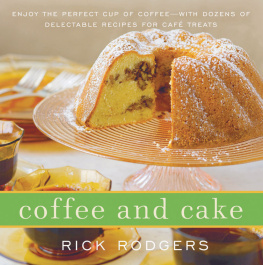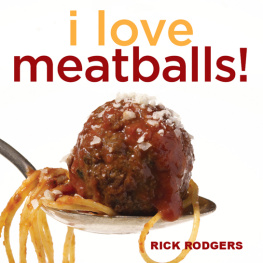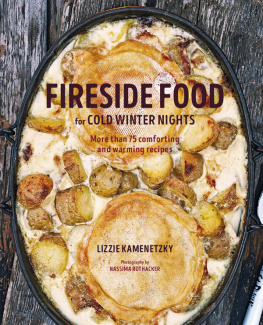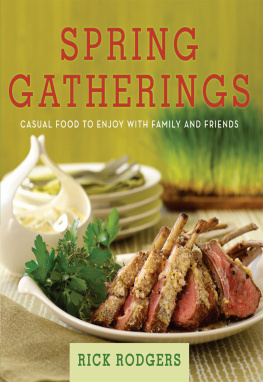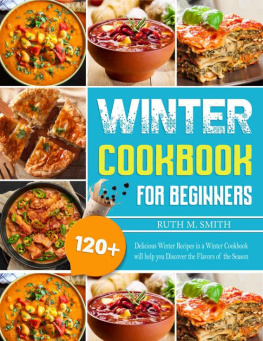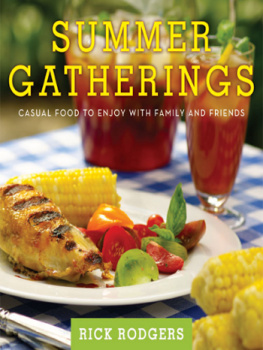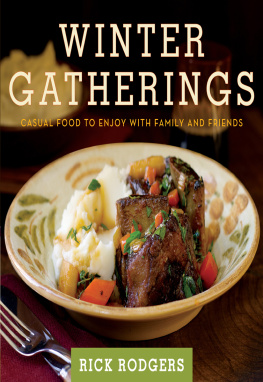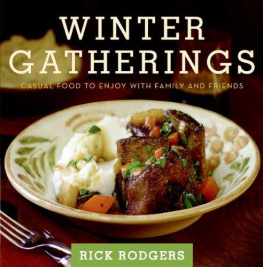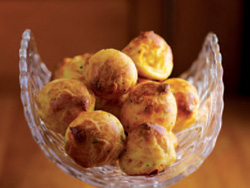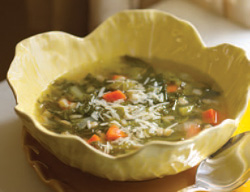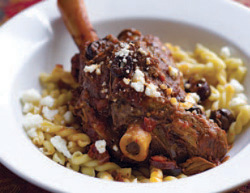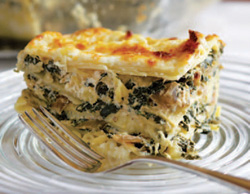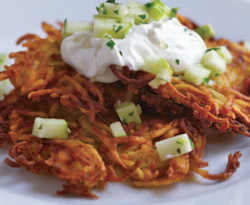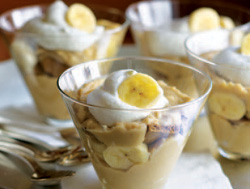When the weather turns cold, cooking becomes more of a challenge. Summers juicy, sun-kissed bounty is long gone, and the remnants of the fall harvest have also dwindled. But thats fine by me. My mind turns to thoughts of woodsy mushrooms, earthy root vegetables and winter squashes with their inherent sweetness, bitter greens that can be tamed by long cooking, and the huge array of brightly colored citrus to be found at the market.
Its no secret that American cooks can get just about whatever produce they want out of its natural seasonseasonability doesnt equate to availability anymore. And availability doesnt equate to quality, either. As you have surely found in your own experience, the more distant the source of your food, the less flavor it has. Do the math on the impact of long-traveled food on our environment and you are likely to lose your appetite. This isnt a book about only cooking with locally produced ingredients, although it has become a no-brainer that supporting your local agriculture is good for your community. But Winter Gatherings , like its companion volumes in this seasonal gatherings book series, does hope to inspire you to cook with traditional seasonal fare, and to show that your cooking will be the better for it.
Traditional is key here. When our country was agrarian-based, for the majority of cooks it was not just a struggle to get interesting fare on the table during the winter, but any food at all. Fresh vegetables were pretty much restricted to root vegetables stored in the cellar. Canned, pickled, salted, and otherwise preserved produce and meats were eked out to create meals. Nowadays, we cook with turnips in January not because we dont have a choice, but because our palates crave the variety that cooking with the seasons brings.

Even though I dont have pantry shelves lined with rows of home-canned goods, I turn to plenty of preserved foods during the winter. Olives, anchovies, sauerkraut, canned and sun-dried tomatoes, chocolate, canned or dried beans, grains, cheese, maple syrup, and other foods that arent fresh, but certainly are tasty, are pulled into action.
As for fresh produce, the choices are more plentiful than might be expected. There are at least three growing regions (Southern California, the Southwest and Texas, and Florida) for winter citrus, so our fruit baskets can be loaded with oranges, lemons, and grapefruit, even when its nippy outside. In winter, think of the vegetables that at one time would have been harvested late in the fall and stored in the root cellar for cookingcabbage, leeks, onions, potatoes, turnips, rutabagas, sunchokes, apples, pears, carrots, parsnips, and more. In the summer, I savor every sip of gazpacho, but I dont enjoy my rutabaga and pear soup any less because the latter is made with more humble ingredients.
Chilly weather not only changes the ingredients we cook with, but how we cook them. Instead of quick meals cooked in a flash on the backyard grill, we cook hearty fare like stews and ragouts to warm the insides. I couldnt imagine serving sauerbraten with red cabbage and spaetzle any other time than December, January, or February, and it would be pretty silly to put braised lamb shanks with olives and feta on the menu in August. You may find yourself inside more during the winter, so dishes that require an occasional stir as they quietly simmer on the stove may be easier to attend to. Or it could be more primal, with our minds craving extra fat and carbohydrates to protect our bodies from the cold.
Winter is also the time for parties. Ancient cultures knew that the winter solstice signaled the beginning of the depletion of the food supply, so feasts were in order. The sumptuous bashes we throw for Christmas, Hanukkah, Kwanzaa, and New Years have their roots in this millennium-old tradition. Winter Gatherings shares recipes for all kinds of meals, from modest weeknight suppers to holiday spreads. Food for other special occasions, from Super Bowl Sunday to Saint Valentines Day to Mardi Gras, is included, too. Ive included a few menus for some of the big events of the season, such as a Christmas Day dinner.
So, winter cooking does not have to mean an endless parade of potatoes. Lets lift our steaming mugs of hot chocolate and make a toast to the variety of foods that this austere, but ultimately flavorful, season has to offer.

Gruyre and Rosemary Gougres
Sweet and Spicy Chicken Wings
DillWhole Wheat Blini with American Caviar
Pizza with Fontina, Potatoes, and Tapenade
Baked Brie with Wild Mushrooms and Thyme
Gruyre and Cider Fondue
Chai Eggnog
Orange-Spice Hot Chocolate with Homemade Marshmallows
Gruyre and Rosemary Gougres
Makes about 2 dozen
These little savory cream puffs, perfect for snacking along with a glass of red wine, are great to have in your repertoire. Not only are they tasty, they can be made with ingredients you probably have on hand (yes, you can substitute another semifirm cheese, such as Cheddar or Fontina, for the Gruyre, and your favorite herb for the rosemary, as well) to whip up a quick fresh-from-the-oven appetizer for unexpected guests. There are a few little tricks to making gougres, which Ive incorporated into the recipe. The French call this pastry pte choux (literally cabbage pastry), not just because the round puffs look like cabbages, but because this is the only pastry that is hot. That would make it pte chaud or hot pastry, and chaud became corrupted into choux over the years.
cup whole milk
6 tablespoons ( stick) unsalted butter, cut up
1 cup all-purpose flour
5 large eggs, divided
cup (2 ounces) shredded Gruyre cheese
2 teaspoons finely chopped fresh rosemary or 1 teaspoon crumbled dried rosemary
2 teaspoons Dijon mustard
teaspoon salt, plus more for the egg glaze
teaspoon freshly ground black pepper
- Position a rack in the center of the oven. Line a large baking sheet with parchment paper or a silicone baking mat.
- Bring the milk and butter to a simmer in a heavy-bottomed medium saucepan over medium heat, stirring occasionally to be sure that the butter is completely melted by the time the milk simmers. Add the flour, all at once, and stir with a wooden spoon to make a thick paste. Reduce the heat to low. Stir constantly until the paste comes together into a ball and films the bottom of the saucepan, about 1 minute. Adjust the heat as necessary so the paste cooks without burning. The idea here is to force off excess moisture, in the form of steam, from the paste in order to make a crisper pastry. Remove the saucepan from the heat.


